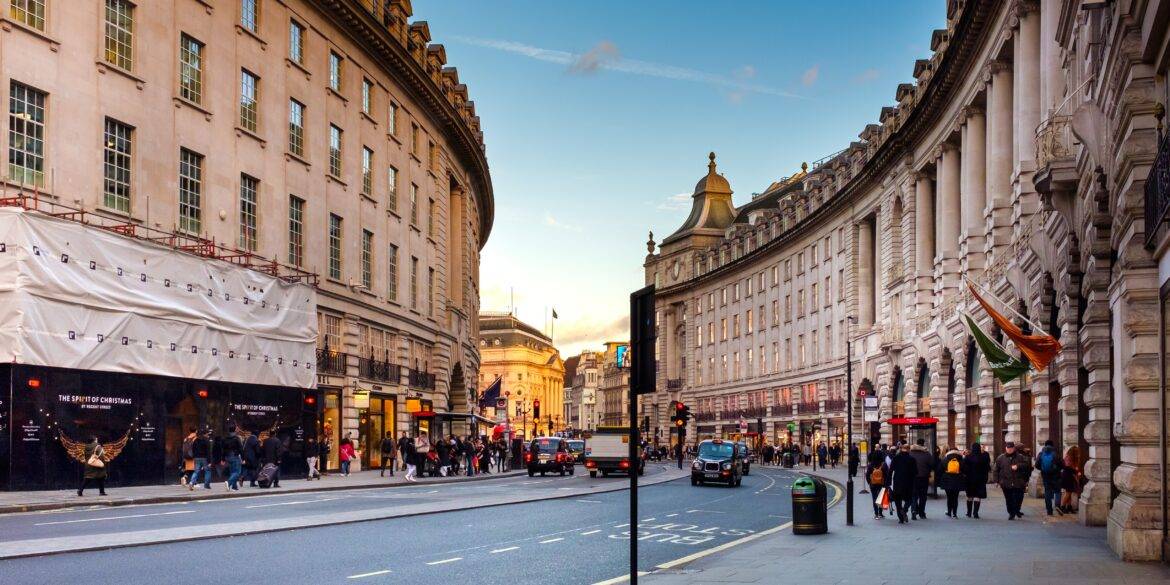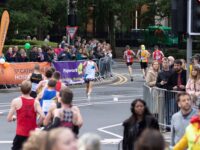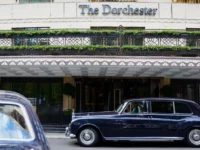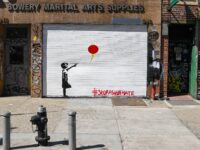The Royal Route: 10 Favorite Locations of Elizabeth II
For the platinum anniversary of the reign of Elizabeth II, “Kommersant UK” has prepared a list of London locations, one way or another connected with the name of the longest-reigning monarch in history. Some of these places come to mind immediately (for example, we all know where the royal residence is), while few have heard of others.
Kensington Palace
Today, Kensington Palace is the home of William and Catherine, the Duke and Duchess of Cambridge, and the official residence of the Duke and Duchess of Gloucester and the Duke and Duchess of Kent. The future Princess Lilibet lived here until the death of her grandfather, King George V, and the abdication of Prince Edward. After these events, Prince Albert became King George VI, and the royal family had to move to Buckingham Palace.
Kensington Palace, built in the Baroque style in 1605, is located in West London. The palace is open to the public.
Clarence House and St. James’s Palace
In 1949, Princess Elizabeth, her husband Philip and little Prince Charles moved into Clarence House, a four-story building adjacent to St. James’s Palace, where they lived until the death of King George VI. As soon as Elizabeth became queen (by that time Princess Anne, born just at Clarence House, appeared in the family), they had to move to Buckingham Palace, but the queen’s mother and sister occupied Clarence House. Now Prince Charles and Camilla, Duchess of Cornwall live here, and in August this place opens to tourists. At any time of the year you can see sentries of the Welsh Guards here.

Buckingham Palace
This place is the official residence of the reigning monarch, where history is made. It is here that the Queen honors prime ministers with her audience, most important state dinners take place here, and knighthoods are awarded here. Princes Charles, Andrew and Edward were born here. At important moments in history, the royal family greets photographers from the balcony of Buckingham Palace, and crowds of tourists gather at the gates to watch the ceremony of changing the guard of honor. Queen Elizabeth moved here at the age of 10 and lived here permanently until the pandemic.
In July and August, the royal family goes to Scotland, and at this time Buckingham Palace opens its doors to tourists (according to statistics, about 50 thousand guests manage to visit it during these months). They can admire the lake in the garden and flamingos, as well as wander through the official premises of the palace. It is said that somewhere in the White Chapel there is a secret entrance to the Queen’s private living quarters. By the way, it was Elizabeth who opened Buckingham Palace to everyone in 1993: in her opinion, tourism will help pay for the reconstruction of many of Britain’s decaying palaces.
The Queen’s Gallery
British monarchs inherit more than half a million outstanding works of world art. Queen Elizabeth differs from her predecessors in that she decided not to accumulate numerous paintings and sculptures, but to share them with the people. By her will, the chapel was reconstructed, adjacent to the south wall of Buckingham Palace and bombed during the Second World War. In 1962, the Queen’s Gallery was opened here – a museum displaying works of art belonging to the royal family.

Windsor Castle
According to the Queen herself, Windsor Castle is her favorite residence, even though Elizabeth and her sister Margaret had to stay here during World War II. It is believed that this is the largest inhabited castle in the world, and it is located just 30 minutes from London, in Berkshire. Prince Philip also loved the place; his mother was born here. Most of the time, Windsor Castle was called a weekend residence, but in March 2020, Elizabeth completely moved here. By the way, it was in Windsor that the Queen received Nikita Khrushchev in 1956, and in 1989 Mikhail Gorbachev and his wife Raisa.
In 2018, Prince Harry and Meghan Markle married at St George’s Chapel at Windsor Castle. Many people of royal blood are buried in this 13th-century building, including Henry VIII, Charles I, as well as grandparents, parents and sister of Elizabeth. She herself will also be buried here.
Westminster Abbey
Westminster Abbey is the Queen’s main church and hosts important ceremonial services. In 1947, when Britain was still recovering from the consequences of the Second World War, it was here that Elizabeth became the wife of Lieutenant Philip Mountbatten (both of them were great-great-grandchildren of Queen Victoria). In 1953, the coronation ceremony took place in Westminster Abbey (since the time of William the Conqueror, almost all British rulers have been crowned here – with the exception of two). Again and again Elizabeth appears at Westminster Abbey for weddings and funerals; her predecessors, who ruled the country centuries ago, are also buried here.
This place is on the list of must-sees on your first visit to London. In addition to the main building of the church, the courtyards and cloisters, the neo-Gothic chapter house, the 900-year-old College Garden and the Poets’ Corner, where the graves and cenotaphs of many prominent British writers (for example, Samuel Johnson, Tennyson, Browning, Dickens, Blake) are worthy of attention.
Mayfair
Elizabeth Alexandra May Windsor was born in this area – at 17 Brewton Street. Of course, not in the Hakkasan Mayfair cocktail bar, which is located there now: on April 21, 1926, the residence of the Earl of Strathmore was located here. At the time of Lilibet’s birth, no one could have imagined that one day she would rule the country: the first contender for the throne was her uncle, then his (hypothetical) children, and if King George had a boy, he would also have pressed Elizabeth in line for the crown . The christening of Princess Elizabeth took place on May 29 in the chapel of Buckingham Palace, later destroyed during the war years. Lilibet spent her first years at 145 Piccadilly, but this house was also bombed by the Germans in 1940 and has not survived.

St. Paul’s Cathedral
St. Paul’s Cathedral is another traditional site for public celebrations. Elizabeth visited it at important milestones of her reign – for example, the service in the cathedral marked the silver jubilee of her reign in 1977, the golden jubilee in 2002 and the diamond jubilee in 2012. It also hosted the funeral of Sir Winston Churchill in 1965 and the wedding of Prince Charles and Diana Spencer in 1981, at which the monarch, of course, was also present.
Selfridges and Fortnum&Mason
The Queen also has her favorite stores – she usually awards them with a royal order, indicating special gratitude. In London, the luxurious Selfridges department store on Oxford Street and the centuries-old upscale grocery store Fortnum & Mason were awarded such an order. It is noteworthy that smaller enterprises, such as the Twinings tea shop, the Floris perfume shop, founded in 1730, and … the Boots chain of stores, also received Elizabeth’s approval. But the Harrods chain of stores lost the patronage of the Queen in 2000, and the then owner was so angry that he burned the order on his lawn.
Claridge’s
Few London hotels can rival Claridge’s in elegance and sophistication. This luxurious five-star hotel on Brook Street is a regular visit from the royal family. Elizabeth’s last visit was in February 2016, when she presented the hotel staff with the Gold Service Scholarship award. Also several times the ruler stayed here privately.
London Airport Transfers will take you to any London entertainment venue in a comfortable car, providing first-class service.
Transfer from London Heathrow Airport to Buckingham Palace:
Mercedes Benz S class Price £132
Travel time 39 minutes
Distance 16.4 miles
Please rate our post. Thanks!
Read also:
The cat named after Queen Elizabeth II lives in The Lanesborough
After some good news, The Queen Elizabeth II has a reason to smile
Queen Elizabeth has been forced to sell socks to raise money












